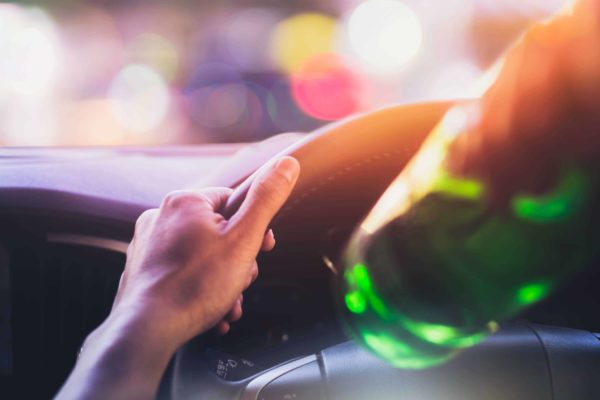You know that consuming alcohol can impair your ability to drive safely. Since you received your driver’s license, you have been told to avoid drinking and driving. But just how does alcohol impair your ability? Speak with any car accident lawyer and they’ll tell you horror stories about drunk driving accidents.
Alcohol impacts everyone differently. How quickly you become intoxicated depends on several factors, such as your gender, height and weight, and even whether or not you’ve had anything to eat. Once people reach a certain level of intoxication, however, they tend to behave in typical ways.
0.02 BAC
To reach a BAC, or blood alcohol concentration level, of 0.02 percent, you will have consumed approximately two alcoholic beverages. You will experience a feeling of relaxation and you will feel warm. You may experience a bit of loss of judgment and an altered mood.
When it comes to driving, your visual function will decline slightly. You will also experience a decline in the ability to perform two tasks at the same time. For example, if you encounter a hazard in the roadway, you may be unable to quickly maneuver your vehicle and brake appropriately.
0.05 BAC
This will be after you have consumed about three alcoholic beverages. Your behaviors will become exaggerated, and you may experience impairment of judgment. You will feel good, your inhibition will be lowered, and your level of alertness will decline. You may also begin to lack the ability to focus your eyes and control small muscles.
As far as driving, drink and driving reduces your coordination and reaction time. You may have difficulty steering, and your response time is altered. You may have a reduced ability to track objects with your eyes.
0.08 BAC
Once you have consumed about four alcoholic beverages, it has become illegal to drive a vehicle. Your self-control, judgment and reasoning abilities are all negatively impacted. It is harder for you to detect danger, and your muscle control is impaired.
When you attempt to drive a vehicle at this level of intoxication, you will find that your ability to concentrate wanes. The speed at which your brain processes information is impacted, and you have impaired perception.
0.10 BAC
When you have consumed approximately 5 to 6 alcoholic beverages, you will begin to have slurred speech and blurred vision. Your ability to think is slowed, and your coordination becomes poor. There is a distinct difference in your reaction time.
Driving with a BAC of 0.10 is dangerous. Your ability to stay in your lane of travel is decreased, and you may not brake smoothly. Your ability to concentrate on the road ahead and make appropriate decisions behind the wheel is greatly impacted.
0.15 BAC
A person typically reaches this level of intoxication after approximately seven alcoholic beverages. A person will experience a lack of muscle control. They may have difficulty balancing when they walk or even standing up without assistance. Those who do not have a high tolerance for alcohol or who have consumed several beverages quickly may begin to vomit.
When a person chooses to drive a vehicle once they have reached a 0.15 BAC, they will experience a substantial impairment when it comes to controlling that vehicle. They will have difficulty concentrating and paying attention to driving, and they will have a marked decrease in visual and auditory processing abilities.
Those Who Are Most At Risk
While it is certainly true that anyone who consumes alcohol and drives a vehicle is at risk, there are those who are at a higher risk. These include younger people, motorcyclists, and those with prior DUIs. Drinking and driving tends to increase in severity in orders of magnitude. Drivers who are arrested for DUIs have, on average, operated a vehicle under the influence 100 times. This will only get worse if they continue to drink and drive. Remember that you can get compensation for getting injuries in a drunk driving accident.
Young people, statistically, are more likely to be involved in a motor vehicle accident that involves BAC levels greater than 0.08 percent. About 28 percent of people involved in fatal accidents where alcohol was to blame were between the ages of 21 and 24 years old. This group was closely followed by 27 percent of people between the ages of 25 and 34.
Motorcyclists are also in danger. Of those killed in crashes in 2015, 27 percent had a BAC of 0.08 or greater. Of these people, the biggest risk is for people aged 35-39. People who have prior DUIs are 4.5 times more likely to be involved in a fatal crash with an illegal amount of alcohol in their system.
Known Preventives
There are measures that have been taken that have been proven to reduce injury and death related to drunk driving. These include sobriety checkpoints, the requirement of an interlock ignition device, actively enforcing DUI laws, and community-based approaches.
If you have been injured in an accident, call a car accident lawyer. If an intoxicated driver is found to have been at fault, you have legal rights. Reach out to our team of experienced personal injury attorneys for assistance. We will help you schedule an appointment for a free case evaluation and review the details of your accident. You may be entitled to damages for the financial loss you have suffered. Additionally, you could sue the bar for negligence. Call today or browse our website for more information about our firm.

